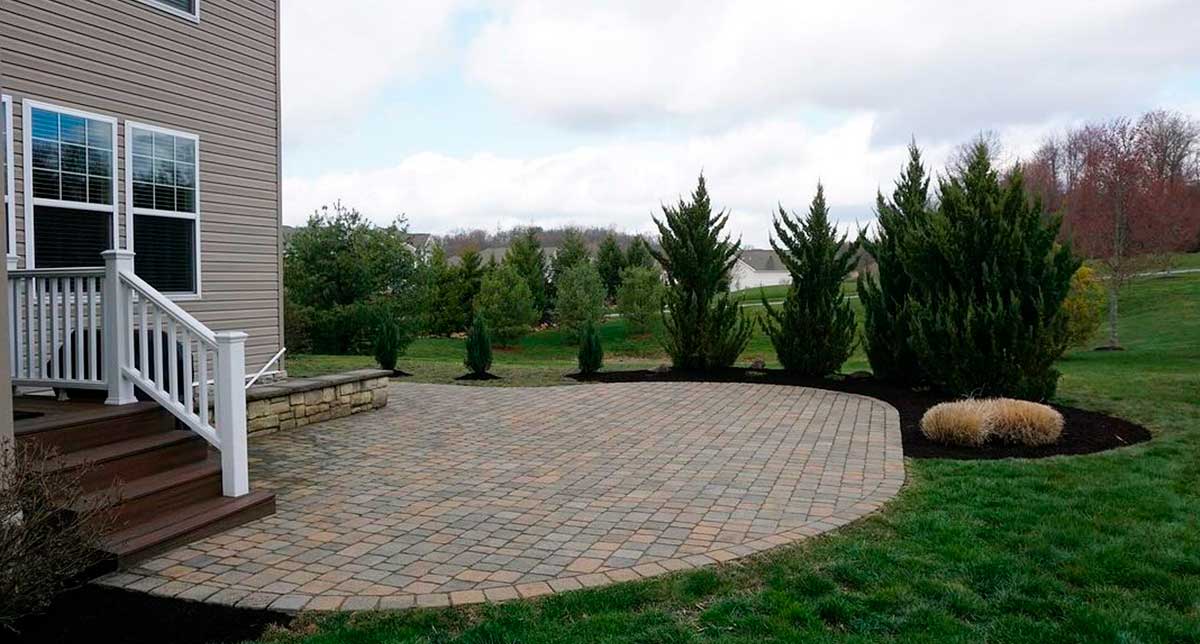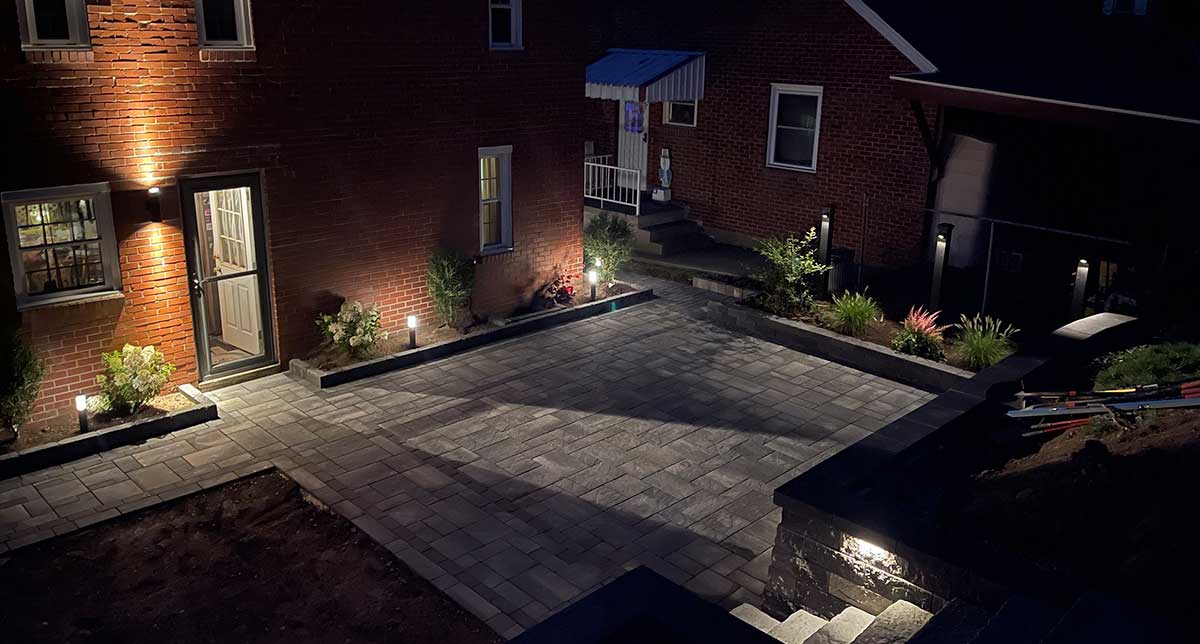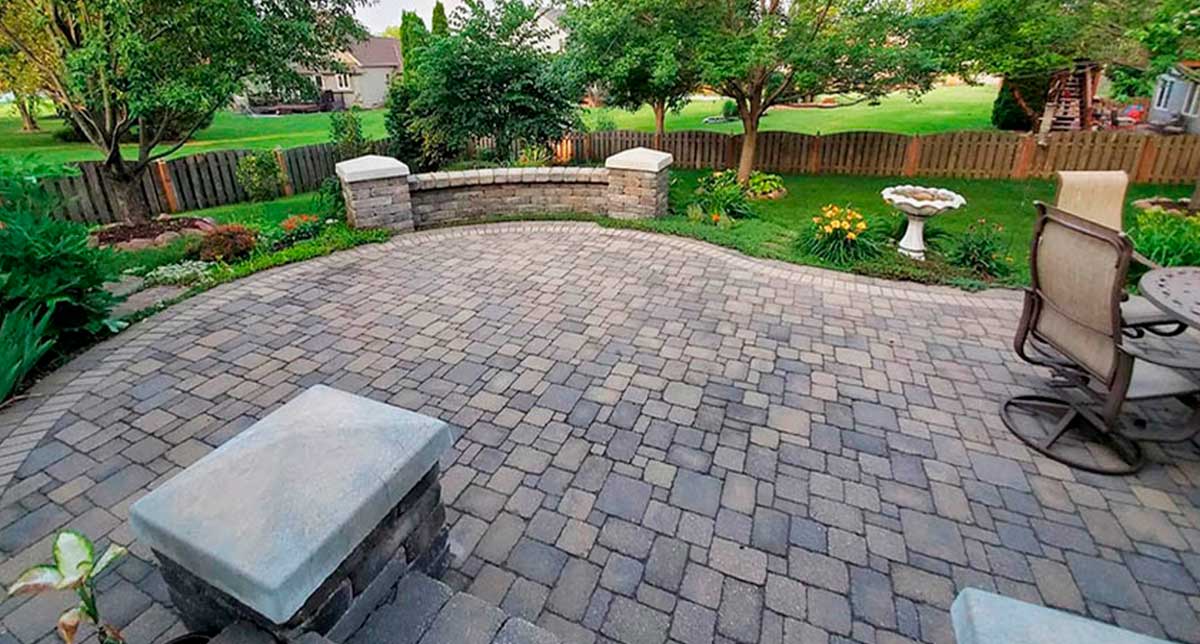A patio is more than just a slab of stone or concrete, it is the place where enjoyment happens. It’s where you unwind after a long day, make barbecues with friends, sip your morning coffee, or enjoy a quiet evening under the stars. But to truly make the most of your patio, it needs to feel like a natural part of your outdoor space. That’s where patio landscaping comes in.
Patio landscaping is all about creating a setting around your patio that complements the space, creating comfort, and a good-looking yard. When done right, it turns your patio into a true outdoor room, a place that feels just as inviting as the inside of your home.
Patio Landscaping Explained
Patio landscaping refers to the design and development of the area surrounding your patio. It includes everything from the plants you choose to the materials you use, the lighting, layout, and even the transitions between your patio and the rest of your yard. Unlike simple landscaping that may focus only on grass and garden beds, patio landscaping combines hardscaping (like pavers, walls, and furniture) with softscaping (like flowers, shrubs, and trees) to create a harmonious, functional space.
The goal is to make the patio feel like a natural extension of your home, not just a concrete surface dropped in the middle of your lawn. Every decision, from the height of your retaining wall to the kind of lighting you install, can shape how the space is used and enjoyed.
Choosing the Right Layout
One of the first steps in patio landscaping is deciding how you want to use the space. Do you need room for dining? Lounging? Maybe a fire pit or an outdoor kitchen? The intended purpose will guide the design. For example, if you plan to use your patio mainly for meals and gatherings, you’ll want to plan for comfortable seating, a dining table, and perhaps shade from an umbrella or pergola. On the other hand, if it’s more of a relaxation space, cushioned chairs, side tables, and warm lighting become more important. Once you know how the space will be used, the layout should take into account traffic flow and balance. You’ll want to ensure there’s room to walk between furniture and into the yard. Borders and transitions between surfaces, like stepping stones or garden beds, can create natural pathways that guide people through the place easily.
Planting with Purpose
Plants play a major role in patio landscaping. They soften hard edges, add color and texture, provide shade and privacy, and even help keep pests away. When choosing plants, it’s important to think about how much sunlight the area receives, how much maintenance you’re willing to do, and what kind of atmosphere you want to create. For a lush, tropical vibe, larger leafy plants like ferns or ornamental grasses work well. If you prefer something low-maintenance and classic, evergreen shrubs or small flowering perennials might be more your speed. Plants can also be used to frame the patio or define different “zones” within your outdoor area. Another benefit of planting is the way it helps to maintain privacy. Instead of building a fence or wall, many homeowners use tall shrubs, climbing vines, or decorative trees to create a more natural barrier between their patio and neighboring properties.

Using Hardscape Features
Patio landscaping isn’t just about plants—it also involves hardscape elements that shape the structure of your space. These include things like retaining walls, built-in seating, steps, edging, and decorative stonework. Hardscaping helps to define the space, especially if your patio is built on a slope or uneven ground. A small retaining wall can level out the area and double as extra seating, while built-in benches or stone planters offer function and style. Moreover, materials are just as important as the use of hardscape. Natural stone, brick, and pavers are popular choices for patio surfaces, each offering different textures and colors that go with the architecture of your home. Even the pattern in which the stones are laid can influence the overall look of the patio; circular patterns feel softer and more relaxed, while straight lines can give a clean, modern vibe.
Lighting the Space
Lighting is one of the most ignored but essential elements of patio landscaping. During the day, natural light keeps the space bright and cheerful, but when the sun goes down, good lighting keeps the patio functional and beautiful. It’s not just about visibility, lighting can create ambiance, highlight certain features, and make the entire space feel safer and more usable.
The options available depend on your budget and style. String lights create a festive feeling and are easy to hang across pergolas or between trees. Solar-powered lights are affordable and can be placed along pathways or borders. Built-in lighting, like LED strips under seating or in steps, creates a more integrated look. Spotlights draw attention to focal points like a sculpture, a tree, or a water feature.

Practical Considerations
-As you design your patio landscaping, it’s important to think about maintenance and climate. Choose plants that can thrive in your local weather conditions, and don’t forget about irrigation.
-In a living area with hot, dry summers, a drip irrigation system might keep your plants healthy without wasting water. In colder regions, it’s wise to choose perennials that can survive frost, or plan for replaceable plants such as annuals.
-Drainage is another important factor. Make sure water flows away from your patio and doesn’t pool in the middle or against your home’s foundation. Sloping the patio slightly or installing a drainage system beneath it can prevent damage over time.
-Furniture should also be chosen with durability in mind. Weather-resistant materials like metal, teak, or polywood are smart options if your patio will be exposed to sun and rain. Cushions should be made from outdoor fabric that resists fading and moisture. It’s worth investing in a storage solution, like a deck box or covered bench, to maintain accessories protected when not in use.
A Space for Every Season
With the right patio landscaping, you can create an outdoor space that works year-round. In the warmer months, shaded areas, fans, and light fabrics help keep things cool. In fall and winter, adding a fire pit, patio heater, or cozy lighting can make the space just as inviting.
What makes patio landscaping so special is that it’s all about personalization. No two patios are exactly alike, and your design should reflect how you want to enjoy your outdoor life. Whether it’s a cozy nook for two or a large space built for entertaining, the goal is to create a patio that’s beautiful, functional, and feels like home. Click here to create your personalized patio landscaping.
How do I plan patio landscaping for my backyard?
Start by assessing your space, considering sun exposure, traffic flow, and desired activities. Choose materials, plants, and features that complement your home and lifestyle. A well-thought-out patio landscaping plan balances beauty, function, and maintenance.
What materials work best for patio landscaping?
Durable options like pavers, natural stone, and reinforced concrete provide a stable surface. Polymeric sand for joints and quality sealers enhance longevity while offering design flexibility and aesthetic appeal for patio landscaping projects.
How can I add functionality to my patio space?
Incorporate seating areas, dining spaces, fire features, outdoor kitchens, and storage. Thoughtful layouts, lighting, and shade structures increase usability while maintaining an inviting and functional patio landscaping design.
Why is proper drainage important for patios?
Drainage prevents water pooling, erosion, and surface damage. Using sloped bases, filter fabrics, and proper materials protects your patio’s structure and surrounding landscape while preserving usability and long-term beauty.
How does landscaping impact the patio’s visual appeal?
Landscaping elements like plants, borders, lighting, and decorative features frame the patio, create focal points, and enhance the overall backyard experience. Balanced design elevates aesthetics and the functionality of your patio landscaping.

